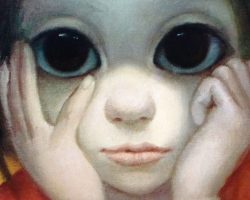
How to Choose the Best Watercolor Paint Sets
How to Choose Watercolor Paint Sets
What are the best Watercolour Paint Sets for you to use? And why? If you are a Professional, Student or even a Kid there are great paint sets to suit you. Knowing which one can help your art.
Each one has it’s advantages and disadvantages in cost, quality and use.
Types of Watercolor Paint Sets
Watercolor paint comes in different levels and types.
1. Kids
2. Students
3. Pros
It also comes in
1. Pans &
2. Tubes
3. Pencils
Choosing Students Watercolor Paint Sets
Types of Watercolor Paints Video
https://www.youtube.com/watch?v=Bd0PgwA55gs
Students Watercolor Paint Sets
Choosing Students Watercolor Paint Sets can be a tough one. Do you go for students quality or artists quality colors? Students paints are best for students right? Not necessarily so here’s why.
Students range from complete beginner to advanced.
Paints vary in quality and price therefore a more advanced student may want a better quality paint.
Even newbies may not want their art affected by inferior paints.
Not everyone can afford the more expensive paints. (or brushes for that matter)
And everyone has an opinion and most of those are different!
So where do you go from here? Decide on where you fit in to the mix. Also decide what you can afford. Then buy the best watercolor paints you can afford, either a well known student paint or an artists one.
When starting out getting a set can be the easiest way as you have a good starting range to begin with, then you can add individual pans, pencils or tubes later. This lens will be covering the pros and cons of each type of set too.
Artists & Professional Watercolor Paint Sets
Artists & Professional Watercolor Paint Sets are the better quality paints and therefore carry a higher price, but they have better pigments and last longer than student ranges.
Kids Watercolor Paint Sets
Kids Watercolor Paint Sets quality has improved over the years, but they are still basic.
My niece used to paint sheet after sheet of pictures. Each one looking like a single colored ink blob. The paintings went on fridges and walls and doors and eventually when then next batch of blob paintings came along in the trash. At this stage it just isn’t worth spending out on fancy expensive paints. Kids art gear isn’t too expensive, some isn’t too bad a quality whilst others are rubbish.
Now my niece is 9 and my sister despairs of the large range of art stuff she has. Watercolor paints and pencils, normal pencils, pens etc. As you child grows the paint quality needs to improve. It is no good them having paints that don’t work well this will just ruin their interest. So stick to kid’s paint as they are safer but get something increasingly better quality.
7 reasons why watercolor paints are great for kids.
Here are 7 reasons why watercolor paints are great for kids.
1. Kids love them
2. They are cheap
3. Parents can get the off the walls and clothes easier than oil or acrylic.
4. They are designed for kids so aren’t toxic if they go on the fingers then in the mouth.
5. They are easy to use.
7. They encourage creativity in kids which stimulates the mind and improves thinking.

